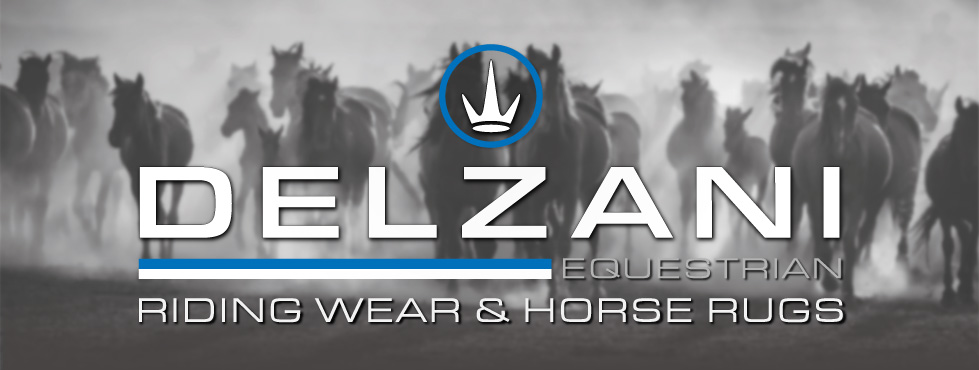Electrolytes for Horses: Why They’re Essential & How to Use Them

Why Electrolytes Are Essential for Horse Health (and How to Use Them Well)
Updated September 2025
A practical guide for Australian horse owners on when, why, and how to use electrolytes to keep horses hydrated, healthy, and performing at their best.
In Australia’s variable climate, from humid summer days to long travel hauls and competition weekends, horses can lose significant fluids and minerals through sweat. Electrolyte,s primarily sodium, chloride, potassium, with supporting calcium and magnesium, are vital for hydration, nerve transmission, muscle contraction and recovery. Without timely replacement, horses are at greater risk of dehydration, fatigue, tying-up, poor performance and slow post-exercise recovery.
What Electrolytes Do (and Why They Matter)
Electrolytes carry an electrical charge in body fluids. Together they:
- Regulate hydration and circulatory function by balancing fluids inside and around cells.
- Drive muscle and nerve signals so your horse can contract and relax muscles efficiently, including the heart.
- Support acid–base balance (pH), nutrient transport, and waste removal.
In practice, a well-hydrated, electrolyte-balanced horse sweats effectively to cool down, drinks promptly after work, maintains appetite, and bounces back faster between rides.
How Horses Lose Electrolytes
Losses occur daily via sweat, urine and manure, but heat, humidity, workload, travel stress and excitement accelerate sweat losses. Sport horses, endurance and stock work horses can produce substantial sweat during training or long days, increasing the need to replace salts promptly after (and sometimes during) exercise.
Recognising an Imbalance
Common red flags include:
- Lethargy, flat performance, or “heavy” muscles
- Muscle fasciculations (twitching), cramping, or stiffness
- Reduced appetite or drinking; dry gums, poor skin-tent return
- Excessive sweating or in severe cases, a worrying lack of sweat in the heat
If you suspect significant dehydration (sunken eyes, dark urine, depression, not drinking), contact your vet. This is a veterinary situation, not a supplement fix.
What to Look For in a Quality Electrolyte Mix
For everyday practicality and post-exercise recovery, choose a balanced powder that mirrors the major salts lost in equine sweat, which means high chloride and sodium, solid potassium, and smaller amounts of calcium and magnesium. As a guide, high-quality formulations commonly provide per kilogram approximately:
- Sodium ~200+ g/kg
- Chloride ~450–480 g/kg
- Potassium ~170 g/kg
- Calcium ~35 g/kg; Magnesium ~3 g/kg
Those ranges align with well-regarded replacers and ensure you’re replenishing what sweat takes out, with chloride and sodium leading the way and potassium close behind. Avoid products where sugar or flavour carriers dominate the label; the goal is to replace salts, not add filler. Evidence-based ingredient panels that list the grams of each electrolyte per kilogram make dosing transparent.
When to Supplement (Daily vs. Situational)
Daily base needs: Many leisure horses on high-forage diets get substantial potassium from pasture/hay. Still, most horses benefit from a consistent source of sodium chloride (salt) either added to feed or available as a free-choice block, especially in warm weather.
Step up supplementation when any of the following apply:
- Temperatures climb and humidity rises (summer, heatwaves)
- Training intensity increases; competition days; long trail or stock work
- Travel, new environments, or temporary appetite changes
For performance days or extended efforts, an electrolyte replacer after work helps restore fluids and salts quickly. For prolonged efforts (e.g., endurance, long hot days), small, more frequent amounts with access to water can support ongoing thirst and recovery.
How to Feed: Practical Dosing Tips
- Hydration first. Always provide free access to fresh, clean water before and after dosing.
- Start small; train the palate. Introduce electrolytes gradually in feed so your horse accepts the taste before a big outing.
- Aim for balance, not a sugar hit. Prioritise products listing robust amounts of sodium, chloride and potassium (plus smaller calcium and magnesium), rather than large percentages of sweeteners or fillers.
- After heavy sweat loss, continue supplementation for 1–2 days to support full recovery.
- Never drench a non-drinking horse with electrolytes. If they won’t drink, call your vet.
Linking Electrolytes with Smarter Management
Electrolytes can’t work alone. Good management reduces unnecessary sweat loss and heat load:
- Summer protection: Keep horses cooler and protect skin with breathable cool fly mesh rugs and lightweight summer flag rugs.
- Insect defence: Reduce irritation and stress with fly masks & bonnets and targeted insect protection.
- Cold snaps: Avoid unnecessary energy drain in winter with well-fitted waterproof turnout rugs.
- Travel smarts: Keep routines consistent and gear organised with saddle, helmet & bridle bags so feed and hydration plans stay on track.
Frequently Asked Questions
Do all horses need a daily electrolyte supplement?
Not necessarily. Many horses in light work get by with salt plus forage. Increase supplementation with heat, humidity, workload and travel.
Can I add electrolytes to water?
You can, but always also offer plain water. Some horses dislike the altered taste, so train at home first. If a horse won’t drink, do not keep adding salts.
How do I know a product is “balanced”?
Look for labels that clearly list grams of sodium, chloride, potassium (and smaller amounts of calcium, magnesium) per kg. Typical premium mixes cluster around sodium ~200 g/kg, chloride ~450–480 g/kg, and potassium ~170 g/kg, with modest calcium and magnesium.
Smart electrolyte use paired with shade, airflow, steady water access and the right rugging keeps Australian horses comfortable, hydrated and ready to perform.
Keep your horse cool, protected and performing: explore Delzani’s hybrid crossover rugs, cool fly mesh rugs, summer flag rugs, and winter turnouts purpose-built for Australian conditions.
Written by Jane Griffiths - An experienced Australian horse owner and product developer with over three decades immersed in equestrian life. Jane has spent years refining horse rugs, tack, and riding apparel to better suit Australian climates. She has enjoyed countless weekends at gymkhanas, show jumping events, and pony club competitions with her daughter, and still loves hitting the trails with friends whenever she can. Her lifelong passion for horses and hands-on understanding of equine comfort continue to shape her practical, rider-first approach to horse care and product design.
Related Equestrian Guides
Fly Mesh Horse Rugs Australia | High Airflow & Insect Protection
Keep your horse cool, bite-free, and comfortable. Delzani Fly Mesh Horse Rugs maximise airflow and UV protection for Australian summer paddocks with coat-friendly meshes and secure, contoured fits for everyday turnout.
Flag Horse Rugs Australia | 100% Cotton Airflow & Summer Comfort
Built for Australian summers, Delzani Flag Horse Rugs keep your horse cool, protected, and comfortable through extreme heat. Made from lightweight cotton flag fabric, they deliver unmatched breathability and freedom of movement.
What Can Horses Eat? Safe Fruits and Vegetables for Horses
Safe fruits and vegetables horses can eat in Australia, with guidance on portion sizes, feeding frequency, and foods to avoid. Practical tips for keeping your horse healthy, balanced, and rewarded with treats in moderation.
Best Horse Coats Start Here: Top Foods and Supplements that Work
A glossy horse coat comes from within. Explore the best foods and supplements for Australian horses, including linseed, sunflower seeds, biotin, and omega oils, to promote coat shine, skin health, and long-term condition.
Summer Horse Rugs Australia | Lightweight, Breathable & Durable for Real Heat
Delzani Summer Horse Rugs are purpose-built for real Australian heat - combining airflow, UV defence and lightweight comfort in every design. Choose from breathable mesh, hybrid or flag styles to keep your horse cool, protected and comfortable all day.











